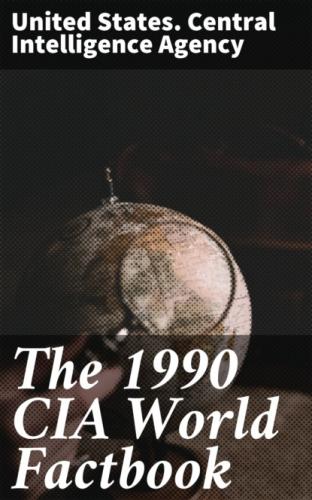Inland waterways: Lake Tanganyika
Ports: Bujumbura (lake port) connects to transportation systems of
Tanzania and Zaire
Civil air: 1 major transport aircraft
Airports: 8 total, 7 usable; 1 with permanent-surface runways; none with runways over 3,659 m; 1 with runways 2,440–3,659 m; none with runways 1,220 to 2,439 m
Telecommunications: sparse system of wire, radiocommunications, and low-capacity radio relay links; 8,000 telephones; stations—2 AM, 2 FM, 1 TV; 1 Indian Ocean INTELSAT earth station
- Defense Forces
Branches: Army (includes naval and air units); paramilitary Gendarmerie
Military manpower: males 15–49, 1,230,559; 642,927 fit for military service; 61,418 reach military age (16) annually
Defense expenditures: 3.1% of GDP (1987)
——————————————————————————
Country: Cambodia
- Geography
Total area: 181,040 km2; land area: 176,520 km2
Comparative area: slightly smaller than Oklahoma
Land boundaries: 2,572 km total; Laos 541 km, Thailand 803 km,
Vietnam 1,228 km
Coastline: 443 km
Maritime claims:
Contiguous zone: 24 nm;
Continental shelf: 200 nm;
Extended economic zone: 200 nm;
Territorial sea: 12 nm
Disputes: offshore islands and three sections of the boundary with Vietnam are in dispute; maritime boundary with Vietnam not defined; occupied by Vietnam on 25 December 1978
Climate: tropical; rainy, monsoon season (May to October); dry season
(December to March); little seasonal temperature variation
Terrain: mostly low, flat plains; mountains in southwest and north
Natural resources: timber, gemstones, some iron ore, manganese, phosphates, hydropower potential
Land use: 16% arable land; 1% permanent crops; 3% meadows and pastures; 76% forest and woodland; 4% other; includes 1% irrigated
Environment: a land of paddies and forests dominated by Mekong River and Tonle Sap
Note: buffer between Thailand and Vietnam
- People
Population: 6,991,107 (July 1990), growth rate 2.2% (1990)
Birth rate: 39 births/1,000 population (1990)
Death rate: 16 deaths/1,000 population (1990)
Net migration rate: 0 migrants/1,000 population (1990)
Infant mortality rate: 128 deaths/1,000 live births (1990)
Life expectancy at birth: 47 years male, 50 years female (1990)
Total fertility rate: 4.5 children born/woman (1990)
Nationality: noun—Cambodian(s); adjective—Cambodian
Ethnic divisions: 90% Khmer (Cambodian), 5% Chinese, 5% other minorities
Religion: 95% Theravada Buddhism, 5% other
Language: Khmer (official), French
Literacy: 48%
Labor force: 2.5–3.0 million; 80% agriculture (1988 est.)
Organized labor: Kampuchea Federation of Trade Unions (FSC); under government control
- Government
Long-form name: none
Type: disputed between the Coalition Government of Democratic Kampuchea
(CGDK) led by Prince NORODOM SIHANOUK and the People's Republic of Kampuchea
(PRK) led by HENG SAMRIN
Capital: Phnom Penh
Administrative divisions: 18 provinces (khet, singular and plural) and
1 autonomous municipality* (rottatheanei, singular and plural);
Batdambang, Kampong Cham, Kampong Chhnang, Kampong Spoe,
Kampong Thum, Kampot, Kandal, Kaoh Kong, Kracheh,
Mondol Kiri, Phnum Penh*, Pouthisat, Preah Vihear,
Prey Veng, Rotanokiri, Siemreab-Otdar Meanchey,
Stoeng Treng, Svay Rieng, Takev; note—there may be a new province of
Banteay Meanchey and Siemreab-Otdar Meanchey may have been
divided into two provinces named Siemreab and Otdar Meanchey
Independence: 9 November 1953 (from France)
Constitution: 27 June 1981
National holidays: CGDK—Independence Day, 17 April (1975);
PRK—Liberation Day, 7 January (1979)
Executive branch: CGDK—president, prime minister; PRK—chairman of the
Council of State, Council of State, chairman of the Council of Ministers,
Council of Ministers
Legislative branch: CGDK—none; PRK—unicameral National Assembly
Judicial branch: CGDK—none; PRK—Supreme People's Court
Leaders: Chief of State—CGDK—President Prince NORODOM SIHANOUK (since NA July 1982); PRK—Chairman of the Council of State HENG SAMRIN (since 27 June 1981);
Head of Government—CGDK—Prime Minister SON SANN (since NA July
1982);
PRK—Chairman of the Council of Ministers HUN SEN (since 14 January 1985)
Political parties and leaders: CGDK—three resistance groups including
Democratic Kampuchea (DK, also known as the Khmer Rouge) under Khieu Samphan,
Khmer People's National Liberation Front (KPNLF) under Son Sann, and National
United Front for an Independent, Neutral, Peaceful, and Cooperative Cambodia
(FUNCINPEC) under Prince Norodom Sihanouk; PRK—Kampuchean People's
Revolutionary Party (KPRP) led by Heng Samrin
Suffrage: universal at age 18
Elections:
CGDK—none;
PRK—National Assembly—last held 1 May 1981; in February 1986 the Assembly voted to extend its term for five years (next to be held by March 1990); results—KPRP is the only party; seats—(123 total) KPRP 123
Member of: ADB, Colombo Plan, ESCAP, FAO, G-77, GATT (de facto), IAEA, IBRD, ICAO, IDA, ILO, IMF, IMO, INTERPOL, IRC, ITU, Mekong Committee (inactive), NAM, UN, UNESCO, UPU, WFTU, WHO, WMO, WTO for CGDK; none for PRK
Diplomatic representation: none
Flag: CGDK—red with the yellow silhouette of a stylized three-towered temple representing Angkor Wat in the center;
Non-Communists—three horizontal bands of blue, red (double width), and blue with a white stylized temple representing Angkor Wat centered on the red band;
PRK—red with the yellow silhouette of a stylized five-towered temple representing Angkor Wat in the center
- Economy Overview: Cambodia is a desperately poor country whose economic development has been stymied by deadly political infighting. The economy is based on agriculture and related industries.
